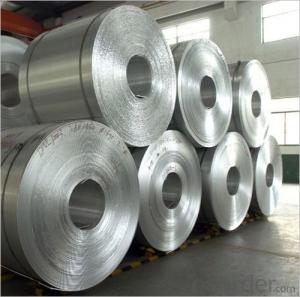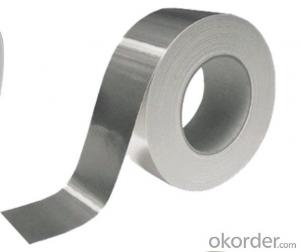Alside Aluminum Trim Coil
Alside Aluminum Trim Coil Related Searches
Led Light Bulbs For Ceiling Fixtures Led Lamps For Ceiling 42 In Ceiling Fan With Light Aluminum Coil Stock For Gutters Aluminum Foil For The Grill Hole Saw For Aluminum Plate Aluminum Tread Plate For Trailer Bow Plate For Aluminum Boat Aluminum Foil For Grow Room Aluminum Foil For Joint PainHot Searches
Stock Price For Aluminum Aluminum Coil Stock For Sale Aluminum Gutter Coil For Sale Used Aluminum Scaffolding For Sale 1/4 Aluminum Plate For Sale Aluminum Bar Stock For Sale Aluminum Round Stock For Sale Aluminum Diamond Plate For Sale Aluminum Scaffolding For Sale Craigslist 6061 Aluminum Plate For Sale Aluminum Dock Plate For Sale 7075 Aluminum Plate For Sale Aluminum Tread Plate For Sale Aluminum Checker Plate For Sale Aluminum Plate For Sale Near Me Plate Aluminum For Sale Aluminum Plate For Sale Aluminum Square Stock For Sale Aluminum Flat Stock For Sale Billet Aluminum Stock For SaleAlside Aluminum Trim Coil Supplier & Manufacturer from China
Okorder.com is a professional Alside Aluminum Trim Coil supplier & manufacturer, offers integrated one-stop services including real-time quoting and online cargo tracking. We are funded by CNBM Group, a Fortune 500 enterprise and the largest Alside Aluminum Trim Coil firm in China.Hot Products
FAQ
- Aluminum coils have various transportation options, including road, rail, and sea. The choice of transportation depends on factors like distance, quantity, and urgency. For short distances, road transportation is common. Special trucks with flatbed trailers or coil carriers are used to securely transport the coils. These trucks have features like adjustable cradles or coil pads to prevent shifting during transit. Longer distances often involve rail transportation. Railcars can accommodate many coils depending on their size and weight. Rail transport is cost-effective and environmentally friendly for long-haul journeys. When coils need to be transported overseas or to another continent, sea transportation is preferred. Shipping containers protect the coils from potential damage. Cargo ships have the capacity and stability for long-distance transportation. Regardless of the mode of transportation, it is vital to handle aluminum coils carefully to prevent damage. Coils are protected from excessive vibration, impact, and adverse weather conditions. Tracking systems are used to monitor the location and condition of the coils during transportation. Overall, the transportation and delivery of aluminum coils require a well-coordinated logistics network to ensure timely and efficient delivery while minimizing the risk of damage.
- Aluminum coils have a density of around 2.7 grams per cubic centimeter (g/cm³) or 2700 kilograms per cubic meter (kg/m³). The specific gravity of aluminum coils is roughly 2.7.
- Yes, aluminum coils are generally easy to install. They are lightweight and flexible, which makes them easier to handle and maneuver during installation. They can be easily cut and shaped to fit the specific requirements of the installation, and they are often available in pre-cut sizes, further simplifying the installation process. Additionally, aluminum coils are typically designed with features such as interlocking edges or snap-on connectors, which make it easier to join multiple coils together or connect them to other components. Overall, with the right tools and basic knowledge of HVAC installation, aluminum coils can be installed relatively easily.
- After installation, it is indeed possible to paint or coat aluminum coils. Aluminum, being a versatile material, lends itself well to painting or coating in order to improve its aesthetics or offer extra safeguarding. Opting to paint or coat aluminum coils subsequent to installation can effectively thwart corrosion, enhance durability, and yield a personalized finish. The selection of paint or coating hinges upon the specific necessities and desired results. Prior to applying any paint or coating, it is crucial to thoroughly clean and prepare the aluminum surface to ensure strong adhesion and long-lasting results.
- Aluminum coils are commonly used in the production of automotive radiators due to their excellent heat transfer properties and lightweight nature. The coils are typically made from high-quality aluminum alloy, which offers superior thermal conductivity compared to other materials. In the manufacturing process, aluminum coils are first shaped into the desired configuration for the radiator's core. This can be done through various methods, such as extrusion or rolling. The coils are then carefully stacked and bonded together to create a sturdy and efficient heat exchanger. The main role of aluminum coils in automotive radiators is to transfer heat from the engine coolant to the surrounding air. As hot coolant flows through the tubes of the radiator, the aluminum coils efficiently absorb this heat. The large surface area of the coils, combined with their excellent thermal conductivity, allows for effective heat dissipation. Moreover, the lightweight nature of aluminum makes it an ideal material for automotive radiators. Reduced weight in vehicles leads to improved fuel efficiency and overall performance. Aluminum coils contribute to this by providing a radiator that is lighter than traditional copper or brass counterparts. Furthermore, aluminum coils offer other advantages in radiator production. They are corrosion-resistant, which helps prolong the lifespan of the radiator and ensures its durability. Aluminum coils also enable more flexible designs, allowing for the creation of radiators with complex shapes and configurations to fit various vehicle models. In conclusion, aluminum coils play a crucial role in the production of automotive radiators. Their excellent heat transfer properties, lightweight nature, corrosion resistance, and design flexibility make them an ideal choice for manufacturing efficient and reliable radiators for automobiles.
- Yes, aluminum coils can be used in automotive heat shields. Aluminum is a lightweight and highly conductive material that can effectively dissipate heat. Additionally, it has excellent corrosion resistance properties, which makes it suitable for automotive applications where heat shields are exposed to high temperatures and harsh environments.
- I have a electrical project to do, and could save about $300.00 by using aluminum wire since I can get it free, but I have never used aluminum before, and am not sure if it is a good way to go.
- Aluminum wire can be connected to copper wire with the proper connector
- Why the aluminum sheet crack after?
- It is either because of wrong filling material for welding or bad welding quality. It doesn’t crack after welding, but cracks when the increasing tension in circling process exceeds the internal stress of the weld.












































